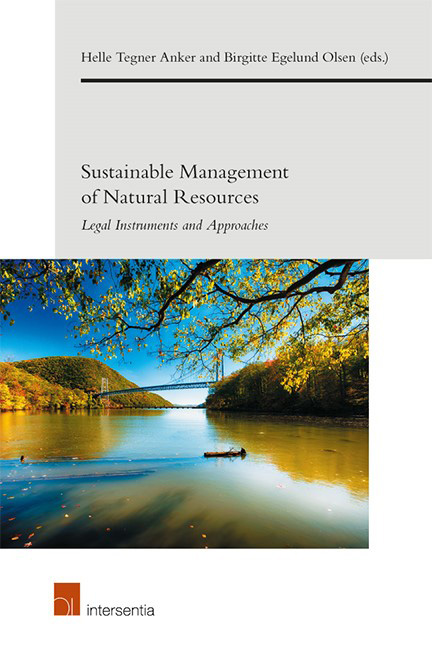Book contents
- Frontmatter
- Contents
- PART I INTRODUCTION
- PART II SUSTAINABILITY IN EU AND INTERNATIONAL LAW
- PART III SUSTAINABLE MANAGEMENT OF WASTE
- PART IV ENVIRONMENTAL AND CLIMATE LITIGATION
- Chapter 7 The European Court of Human Rights: An Underrated Forum for Environmental Litigation
- Chapter 8 A Natural Resource Beyond the Sky: Invoking the Public Trust Doctrine to Protect the Atmosphere from Greenhouse Gas Emissions
- PART V ECOSYSTEM APPROACHES AND ADAPTIVE MANAGEMENT
- PART VI SUSTAINABLE RESOURCE MANAGEMENT: SPECIFIC ISSUES 193
Chapter 7 - The European Court of Human Rights: An Underrated Forum for Environmental Litigation
from PART IV - ENVIRONMENTAL AND CLIMATE LITIGATION
Published online by Cambridge University Press: 31 January 2019
- Frontmatter
- Contents
- PART I INTRODUCTION
- PART II SUSTAINABILITY IN EU AND INTERNATIONAL LAW
- PART III SUSTAINABLE MANAGEMENT OF WASTE
- PART IV ENVIRONMENTAL AND CLIMATE LITIGATION
- Chapter 7 The European Court of Human Rights: An Underrated Forum for Environmental Litigation
- Chapter 8 A Natural Resource Beyond the Sky: Invoking the Public Trust Doctrine to Protect the Atmosphere from Greenhouse Gas Emissions
- PART V ECOSYSTEM APPROACHES AND ADAPTIVE MANAGEMENT
- PART VI SUSTAINABLE RESOURCE MANAGEMENT: SPECIFIC ISSUES 193
Summary
ABSTRACT
Since the 1960s, the ECHR organs have examined over 270 applications related to the protection or the degradation of the natural environment. This chapter offers a selective, systematised and up-to-date analysis of this vast body of case law and of applications pending the Court's examination. It explores the implications of the ECHR general principles for environmental litigation, in particular, the notions of “direct victim”, “serious specific and imminent danger”, “minimum level of disturbance”, and “wide margin of appreciation”. Whenever warranted, it applauds the Court's acceptance of surrogate protection of the environment through civil and political rights and the doctrine of positive obligations, or voices criticism of its conservative approach to giving precedence to economic considerations over the environmental harm. It then takes a forward-looking view on the work of the ECtHR, focusing on its dynamic and evolutive approach to the interpretation of the scope of the ECHR-protected rights and the crossfertilisation of ideas which is occurring between the ECtHR and the IACtHR. Ultimately, it predicts that wise and widespread environmental litigation can make the ECtHR start to employ ecological rationality in explaining the value of nature in cases in which its protection paradoxically seems to collide with conventionally-perceived anthropocentric rights.
INTRODUCTION
The European Convention on Human Rights (“the ECHR” or “the Convention”) does not guarantee a substantive right to a healthy environment and none of its provisions are specifically designed to ensure the general protection or the preservation of nature. But the link between the environment and human rights intrinsically exists.
The theoretical bedrock of this assertion was laid down in the 1972 Stockholm Declaration on the Human Environment and was developed over the years by various authorities, including the Inter-American Court of Human Rights (“IACtHR”) in its most recent Advisory Opinion on the Environment and Human Rights. A thriving natural environment is, therefore, a precondition to the enjoyment of human rights; human rights law can be used as a tool to address environmental issues from both a substantive and procedural stance; and both are necessary for sustainable development.
- Type
- Chapter
- Information
- Sustainable Management of Natural ResourcesLegal Instruments and Approaches, pp. 99 - 120Publisher: IntersentiaPrint publication year: 2018
- 1
- Cited by



